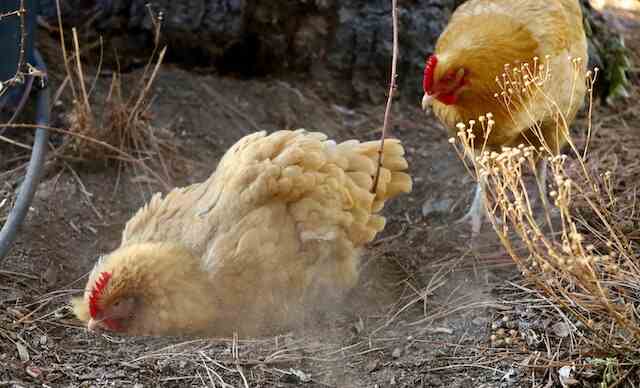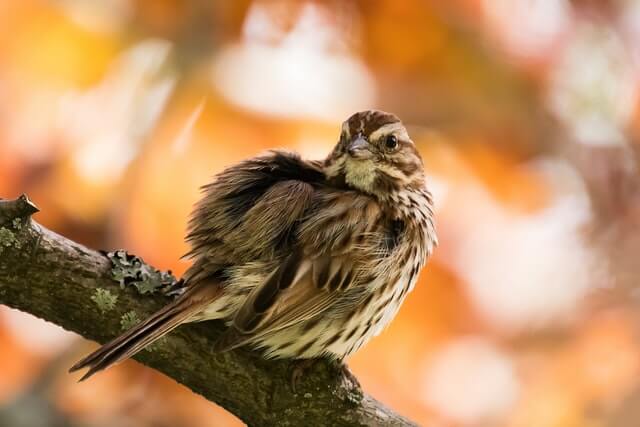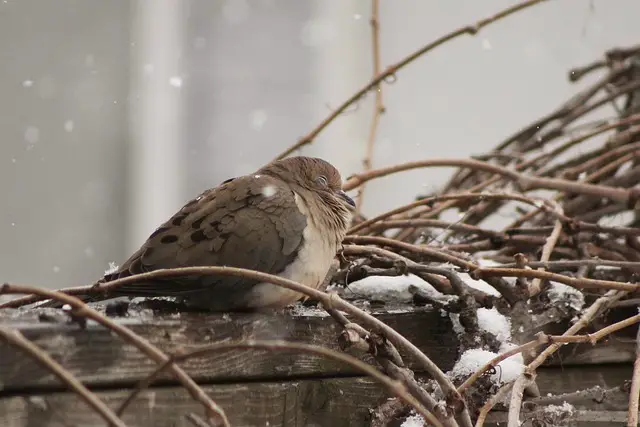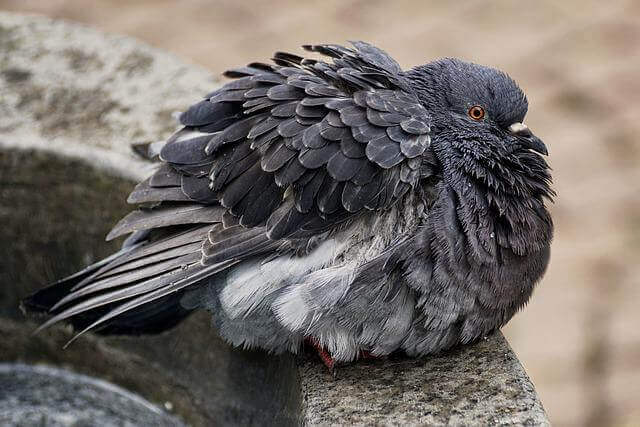Why do birds ruffle their feathers? This is a question that many people have pondered. Some say it’s to keep themselves warm, while others believe they’re doing it for aesthetic purposes. In this article, we will explore the fascinating reason why birds have these strange behaviors.
Table of Contents
- 1 Key Takeaways
- 2 Why do birds ruffle their feathers?
- 3 Why do birds puff up when they sleep?
- 4 Why do birds puff up their chest?
- 5 Why do birds fluff up?
- 6 Do birds fluff up when happy?
- 7 What is it called when a bird fluffs its feathers?
- 8 Why do birds ruffle their feathers in the dirt?
- 9 Why do birds ruffle their feathers to keep warm?
- 10 Why do baby birds ruffle their feathers?
- 11 Why do birds raise their feathers?
- 12 Why do parrots raise their feathers?
- 13 What does it mean when a bird’s feathers are ruffled?
- 14 Why do birds drop feathers?
- 15 Why does my bird puff up when I pet him?
- 16 How can you tell if a bird is happy?
- 17 Why is my female finch puffed up?
- 18 How can you tell if a bird is sad?
- 19 Author
Key Takeaways
- Feather Maintenance: Birds ruffle their feathers to keep them clean and in good condition. This behavior helps in removing dirt, dust, and parasites.
- Thermoregulation: Ruffling feathers creates air pockets that provide insulation, helping birds regulate their body temperature in various weather conditions.
- Adaptation: Feather ruffling can be a response to changing environmental factors, such as temperature or wind, allowing birds to stay comfortable.
- Molting Process: Birds undergo molting, a cyclical process of feather replacement. Ruffling can assist in shedding old feathers and preparing for new growth.
- Social Interaction: Feather ruffling can also serve as a social cue, helping birds communicate with each other within a flock.
Why do birds ruffle their feathers?
Birds ruffle their feathers for a variety of reasons. One reason is to show dominance or aggression. When a bird is angry or wants to assert its dominance, it will puff out its chest and fluff its feathers.
This makes the bird look bigger and tougher, and can intimidate other birds. To stay warm, birds also ruffle their feathers. The movement of air through the feathers helps to create insulation, keeping the bird’s body warm.
And finally, birds will sometimes ruffle their feathers in order to get rid of excess water, which can help them stay light and agile during flight.
Why do birds puff up when they sleep?
Birds puff themselves up when they sleep in order to keep warm. By doing so, they can minimize the amount of heat that escapes their bodies.
In addition to keeping warm, birds also use this behavior as a way to protect themselves from predators. When they are in a puffed-up state, they are less visible, and it is more difficult for an animal to make an attack.
Why do birds puff up their chest?
One of the most common sights in nature is a bird puffing up its chest. You may have wondered what this behavior means, or why birds do it. There are a few reasons why birds may puff up their chest. One reason is to show aggression or dominance.
When a bird puffs up its chest, it makes itself look bigger and more threatening to other birds. This can be especially important during mating season, when males are competing for mates. Another reason birds may puff up their chests is to regulate their body temperature.
Puffed-up feathers create more insulation and can help a bird stay warm in cold weather. Finally, some birds puff up their chests as part of their courtship ritual. By fluffing out their feathers and making themselves look as attractive as possible, these birds hope to attract a mate.
Why do birds fluff up?
Birds fluff up their feathers for many reasons. One reason is to keep warm. Fluffed-up feathers create more insulation than smooth feathers. Birds also fluff up their feathers to show off or to intimidate other birds.
The fluffy feathers make the bird look bigger and more threatening. Finally, birds fluff up their feathers to cool down. The air passing through the fluffy feathers cools the bird down.
Do birds fluff up when happy?
There are many ways to tell if a bird is happy. Some behaviors include singing, preening, and dancing. One of the most common ways to tell if a bird is happy is by watching how they fluff their feathers.
When a bird is happy, they will often fluff up their feathers as a way to show off and look their best. This can be seen in both male and female birds, and it is usually one of the first signs that someone sees that lets them know the bird is happy.
What is it called when a bird fluffs its feathers?
When a bird fluffs its feathers, it is called preening. Preening is when a bird cleans and oils its feathers. Birds use beaks and tongues to clean themselves with their feathers. They also use their beaks to oil their feathers. Oil helps keep the feathers waterproof, and protected from parasites.
Why do birds ruffle their feathers in the dirt?
Birds take dust baths to clean their feathers and get rid of parasites. They will find a spot where the soil is loose and dusty, and then start vigorously ruffling their feathers.
This loosens the dirt and dust, which then sticks to the oily secretions on their feathers. The birds will often roll around in the dirt to make sure they are covered in it.

Why do birds ruffle their feathers to keep warm?
One common assumption is that birds ruffle their feathers to keep warm, but this isn’t actually the primary reason they do it. While fluffing up their feathers does create some insulation and trap pockets of air close to the body, but the main purpose of this behavior is to regulate body temperature.
By adjusting their plumage, birds can control how much heat they lose or gain. In cold weather, create an air layer between the skin and the feather, which helps to keep the bird warm.
Additionally, when the feathers are ruffled, it disrupts the airflow over the body, which also helps to keep the bird warm., and in hot weather they’ll flatten them out to cool down.
Why do baby birds ruffle their feathers?
There are a few reasons why baby birds might ruffle their feathers. One reason is to groom themselves, as preening helps to keep their feathers clean and in good condition.
Another reason is to keep warm. In cold weather, ruffling their feathers can help trap air close to their bodies and keep them warm.
Why do birds raise their feathers?
There are a few different reasons that birds might puff up their feathers. One is to create insulation against the cold. By trapping air between the feathers, they can keep warm in cold weather.
Another reason is to make themselves look bigger and more intimidating to predators or other birds. This is known as feather display, and it can be used either for defense or during courtship rituals.
Raising the feathers also makes the bird’s body movements more visible, which can help them communicate with other birds.
Why do parrots raise their feathers?
There are many reasons why a parrot might raise its feathers. One reason is to show dominance over other birds. If a bird sees another bird with its feathers puffed out, it will know that that bird is not afraid and is in control. Parrots may also raise their feathers to keep themselves warm, or to signal excitement or aggression.
What does it mean when a bird’s feathers are ruffled?
Birds use their beaks and feathers to groom themselves, a process called preening. Feathers play an important role in keeping birds clean and healthy. When a bird’s feathers are ruffled, it means that the bird is not grooming itself properly.
This could possibly be a symptom of illness or stress. Birds use their beaks to pick at dirt and parasites on their feathers. They also use their beaks to spread oil from their preen gland over their feathers.
This oil helps keep the feathers waterproof and helps protect the bird from the sun. If a bird’s feathers are ruffled, it means that there is something preventing it from properly grooming itself.
This could be because of an illness, such as a respiratory infection, or because of stress, such as being in a new environment or being around unfamiliar people or animals.

Why do birds drop feathers?
Birds molt, or lose feathers, for various reasons. Molting helps them maintain their plumage in good condition, accommodating new feather growth and enabling them to adapt to changes in their environment.
In the wild, birds often drop old or damaged feathers to make themselves more aerodynamic and to keep themselves warm.
Feathers can also be lost through molting, a natural process that replaces old feathers with new ones. Domestic birds may also lose feathers due to stress or poor nutrition.
Why does my bird puff up when I pet him?
When you pet your bird, they may puff up as if they’re happy. This is actually a way of them trying to show you that they’re enjoying themselves. Birds will do this when they’re content and feel safe around you.
It’s a way of them telling you that they trust and like you. Petting and stroking a bird is a great way to show your affection for them, and many birds love the attention!
How can you tell if a bird is happy?
There are a few key ways to tell if a bird is happy. One is if it’s singing or whistling. Birds that are happy will often sing or whistle more than birds that aren’t happy. Another way to tell is by how active the bird is.
Active birds are generally happier than inactive ones. You can also look at the bird’s feathers. If they’re smooth and shiny, the bird is usually happy. If they’re ruffled or matted, the bird might not be feeling so good.
Finally, you can watch the bird’s behavior around people and other animals. Happy birds will usually be friendly and sociable, while unhappy birds might be shy or scared.

Why is my female finch puffed up?
One possible reason your female finch may be puffed up is that she is unwell. When a bird is sick, it will often puff up its feathers as a way of trying to stay warm. This is because sick birds have a lower body temperature than healthy birds.
If you think your female finch may be sick, you should take her to a veterinarian. Only a veterinarian can diagnose the cause of your bird’s illness and prescribe the appropriate treatment.
How can you tell if a bird is sad?
There are a number of ways to tell if a bird is sad. One way is to look at the bird’s feathers. If the feathers are ruffled, the bird might be sad. Another way to tell if a bird is sad is to watch the bird’s behavior.
If the bird is not eating or drinking, or if it is sitting on the bottom of its cage, it might be sad. You can also listen to the bird’s voice. If the bird’s voice sounds different from usual, it might be sad.





